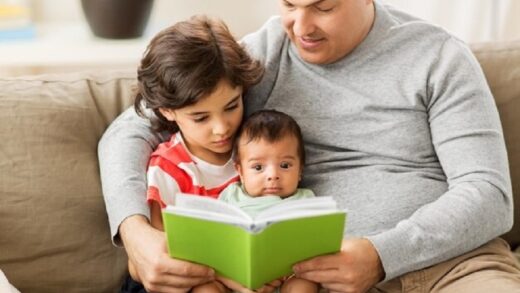As children learn the names of new things around them, they start identifying these objects with certain traits. Adjectives are integral of expression for kids who are just beginning to speak and learn new words. Expressions such as “big book”, “small toy”, and “green tree” among several others become a key part of their vocabulary.
With a growing vocabulary and understanding of the world around them, they start quantifying things and speak in terms of relativity. Describing objects in relation to others helps them in expressing their feelings better. These words or phrases are nothing but comparative adjectives.
Comparative Adjective Meaning
We all know that adjectives are the parts of speech that describe a noun. Comparative adjectives on the other hand help to quantify and compare the two nouns. Some examples of comparative adjectives include:
- My pencil is sharper than yours.
- Her dog runs slower than mine.
- My brother’s room is bigger than mine.
- The green building was taller than the red one.
- Jerry’s toy was brighter in colour than Jill’s.
Understanding comparative adjectives helps children identify and define things better. Comparative words for preschool are usually single words with er or est at the end. As their vocabulary increases, they will move on from simple comparative adjectives like faster, taller etc. to more complex ones like comparative of interesting (more interesting, most interesting).
Fun Degrees of Comparison Activities
Here are some fun ways to help your children learn comparative adjectives and improve their vocabulary. These fun degrees of comparison activities not only help them in school but also make them more aware of the world around them.
- Guessing game
- Pick the card
- Fill in the blanks
- Compare to win
- Guess the card
One of the best ways to learn comparative adjectives is to divide children into groups of two. One person from the opposite group is asked to describe an object to his team using clues such as characteristic features of the object.
For example, a player describing a car for his teammates to guess can use clues such as “faster than a cycle”, “slower than a train” “smaller than a bus”, or “bigger than a bike” The objective of this activity is to help children describe an object using its features and characters in comparison to others.
The objects being described can be present in a textbook, on a drawing or inside the room. Team members need to set the context of the object first through signals.
Students divided into two groups must each pick a card which contains either the name or picture of the object. They must then take turns describing their objects to their teammates by comparing them with the other cards’ objects.
For example, if the two cards picked up are a globe and a pencil, the players can define the pencil as “sharper than a globe”, “slimmer than a globe” etc. Whichever team describes their object with more relevant comparative adjectives will be adjudged the winner.
One of the most interesting aspects of this game is describing two random objects with comparative adjectives. This not just boosts the player’s vocabulary, but, creativity as well.
The objective of this game is to find the missing comparative adjective in a sentence. A teacher or a group leader may ask students to fill in the blanks with a suitable word to give complete context to an incomplete sentence.
For example, The sky during the spring season is ___ than in summer. (more beautiful), (bluer)
A journey in the car is ___ than a bicycle. (faster), ( more comfortable)
This activity helps children’s logical thinking and also enhances their vocabulary. Such activities help children understand the world around them in a comparative state and learn new facts about everyday life. The teacher or group leader must ensure the questions are based on some fun facts or scientific teachings so that children can have fun and learn at the same time.
This activity is a great way to help children learn to describe two unrelated things and build on their storytelling skills. To start the game, one player starts with a sentence describing an object such as: “ My dog Pluto is extremely intelligent.” The second player then has to build on the statement by saying something like: “My cat Juno is cuter than your Pluto”. The third player has to take the story forward by saying something along the lines of: “My car is bigger than Juno and Pluto and can fit both of them inside.”
This activity helps the children describe things better in comparison to others. It also helps improve their creative skills and ability to think fast.
Each player is given a card with the image of an object. The student has to make a statement describing his card in comparison to their opponent’s card. The student who makes an appropriate comparison wins.
For example, if you have received a cheetah card and your opponent has received a cycle. You can say something like: “I’m sure my card is faster than yours”. In this case, since the Cheetah is faster than the cycle, you win.
However, the game would continue to another guess if your opponent’s card is something like a table as a comparison between cheetah and table can’t be made based on speed.
This game helps in finding a similar ground between two random objects and comparing them. They help in improving the vocabulary, creative thinking and spontaneity of the players.
At Mother’s Pet Kindergarten, we ensure children learn about the world around them through such fun activities. A fun-filled learning curriculum is an integral part of our approach. These activities help create a positive bond between the kids, help them in socialising better and also improve their creative thinking.













Recent Comments